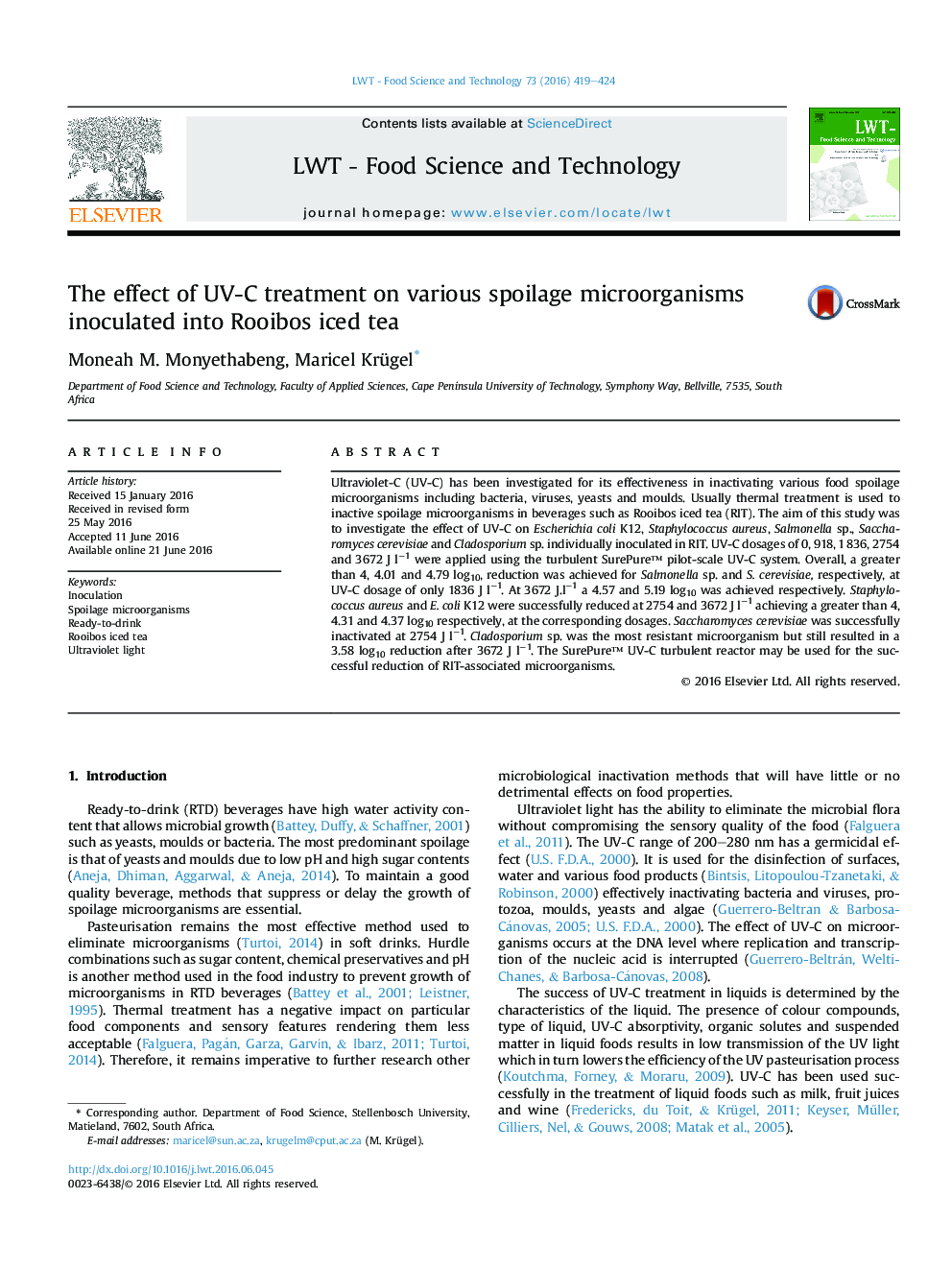| کد مقاله | کد نشریه | سال انتشار | مقاله انگلیسی | نسخه تمام متن |
|---|---|---|---|---|
| 4563379 | 1628524 | 2016 | 6 صفحه PDF | دانلود رایگان |

• The Escherichia coli K12, Salmonella sp., Staphylococcus aureus and Saccharomyces cerevisiae were significantly reduced by UV-C.
• A 4 log10 and above were recorded for all microorganisms except Cladosporium sp.
• The optimum UV-C dosage was 1836 J l−1 for all microorganisms except Cladosporium sp.
• The higher the UV-C dosage the better the inactivation.
• Saccharomyces cerevisiae was the most sensitive microorganism against UV-C whilst Cladosporium sp. was the most resistant.
Ultraviolet-C (UV-C) has been investigated for its effectiveness in inactivating various food spoilage microorganisms including bacteria, viruses, yeasts and moulds. Usually thermal treatment is used to inactive spoilage microorganisms in beverages such as Rooibos iced tea (RIT). The aim of this study was to investigate the effect of UV-C on Escherichia coli K12, Staphylococcus aureus, Salmonella sp., Saccharomyces cerevisiae and Cladosporium sp. individually inoculated in RIT. UV-C dosages of 0, 918, 1 836, 2754 and 3672 J l−1 were applied using the turbulent SurePure™ pilot-scale UV-C system. Overall, a greater than 4, 4.01 and 4.79 log10, reduction was achieved for Salmonella sp. and S. cerevisiae, respectively, at UV-C dosage of only 1836 J l−1. At 3672 J.l−1 a 4.57 and 5.19 log10 was achieved respectively. Staphylococcus aureus and E. coli K12 were successfully reduced at 2754 and 3672 J l−1 achieving a greater than 4, 4.31 and 4.37 log10 respectively, at the corresponding dosages. Saccharomyces cerevisiae was successfully inactivated at 2754 J l−1. Cladosporium sp. was the most resistant microorganism but still resulted in a 3.58 log10 reduction after 3672 J l−1. The SurePure™ UV-C turbulent reactor may be used for the successful reduction of RIT-associated microorganisms.
Journal: LWT - Food Science and Technology - Volume 73, November 2016, Pages 419–424